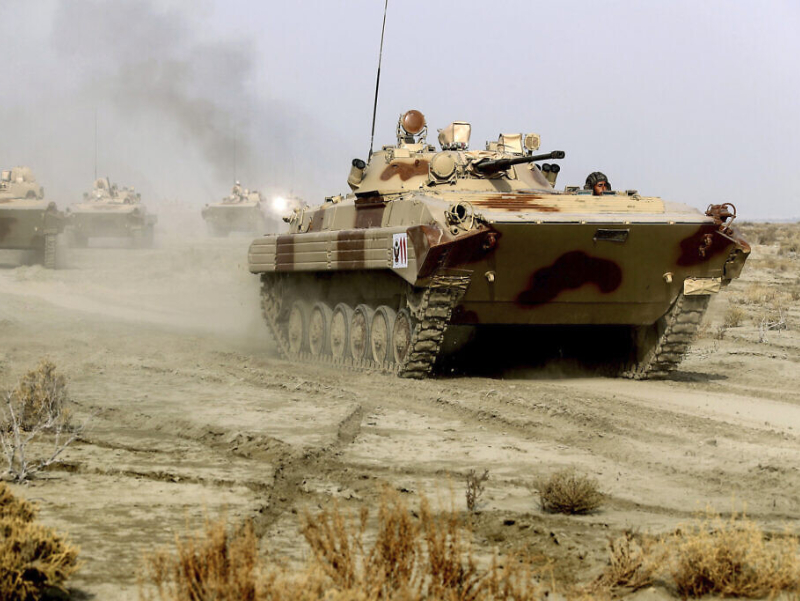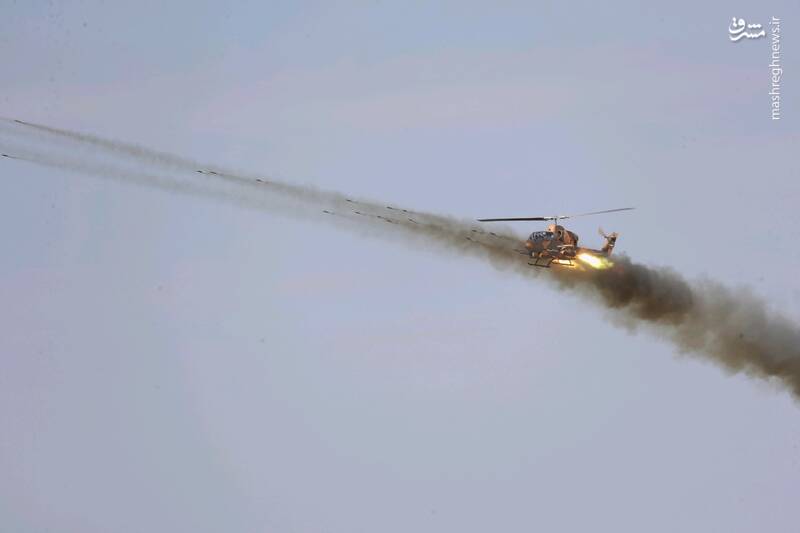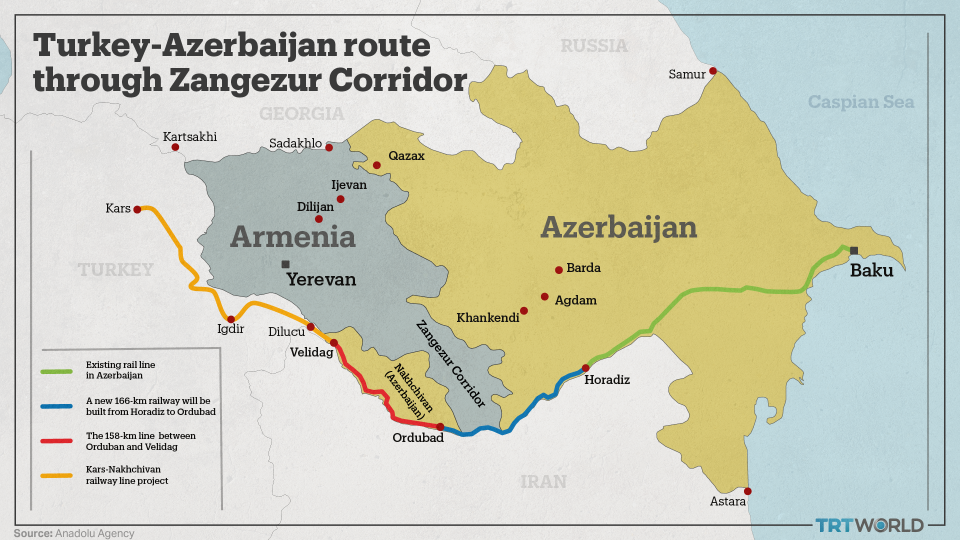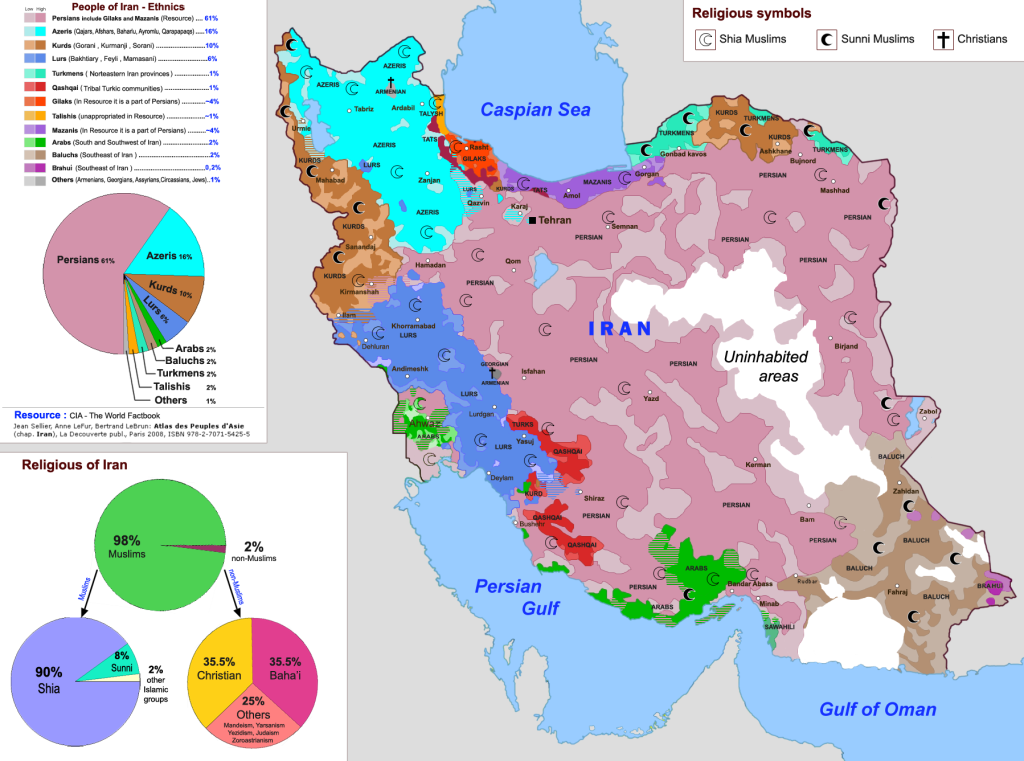
Verzija teksta na srpskom jeziku autora Stefana Dobrića dostupna je na sledećem linku: Tekst na srpskom jeziku.
In September 2021, the Armed Forces of the Islamic Republic of Iran started transferring one part of their units and military equipment to their north-western border. The reason for such trooping is the "Conquerors of Khaybar" military exercise, which officially began on October 1. Seeing that it was held in the immediate vicinity of the border with the Republic of Azerbaijan, this training activity attracted global attention but also raised the issue of the relations between the two countries.
As expected, this move by the Iran authorities provoked Azerbaijan, whose administration decided to organise a military exercise in conjunction with the Turkish Army as a response. The Azerbaijani and Turkish Armed Forces carried out the Indestructible Brotherhood drill between October 5 and 8 in the Nakhchivan Autonomous Republic, right on the Azerbaijani border with Iran. On the very first day of the exercise, Iran closed its airspace to the Azerbaijani air force, clearly indicating a high degree of mistrust between the two countries. Therefore, the question arises of what really hides behind the demonstration of military power in this region and whether it can lead to a direct armed conflict.
Throughout history, Iran–Azerbaijan relations have often been ambivalent. Although Tehran officials were among the first to establish connections with the newly-formed Republic of Azerbaijan after the disintegration of the Soviet Union, the first cooling of relations followed Baku's turn toward Ankara. In the following period, due to the cultural and religious closeness, as well as the vast number of Azerbaijani Turks (Azeris) in Iran, the relations between the two countries were relatively good. However, their deterioration occurred during the 2020 Nagorno-Karabakh War, following the accusations against Iran over its support for Armenia.
This process continued for more than a year and in September of 2021, one could witness several events that contributed to a new distancing of neighbours and an increase in tensions. Namely, the first such activity is the "Three Brothers - 2021" joint exercise of the Turkish, Pakistani and Azerbaijani Armed Forces. In addition, Baku officials introduced taxes for lorries travelling on the Iran-Armenia route and also detained two Iranian lorry drivers, whose fate is still unknown.
On the other hand, the previously mentioned Iranian army drill caused tensions between Iran and Azerbaijan to grow further. "Conquerors of Khaybar" is the most extensive training activity carried out in the north-western part of the Islamic Republic of Iran in the last two decades. According to statements by Tehran officials, this wargame was executed to counter the increasing influence and presence of Israel and members of the Islamic State in the surrounding area. Despite these claims and based on the exercise's location, it was clearly an indirect message for Azerbaijan. As announced by the Commander of the Iranian Army’s Ground Forces, General Kioumars Heydari, four new types of military equipment were tested throughout the drill – a drone with a long flight range, systems for offensive and defensive electronic warfare and two models of anti-tank rifles. Multitudes of ballistic missiles were also observed, including Fateh-313, with a range of up to 500 kilometres, and Zolfaghar, with a range of up to 700 kilometres.

According to unofficial information, despite the extensive engagement of personnel and equipment, the drill was cancelled after only one day. Some reports say that due to an error during the execution of the exercise, a Bell AH-1 SuperCobra helicopter launched friendly fire on a column of armoured vehicles. It was also asserted that an Iranian tank ran over a civilian automobile and killed the person inside it.
In the event of a potential conflict with Azerbaijan, Iran would rely on its numerical superiority in most aspects. It is estimated that the Iranian Armed Forces number about 525,000 active soldiers, while Baku can count on 125,000 soldiers. Iranian tank forces number over 1,600 platforms and are primarily composed of Soviet models T-72 and T-55, in addition to a smaller number of domestic armoured vehicles of the Zulfiqar 1 and 3 types. When it comes to armoured units, various information has emerged in the past few years on the development of a new tank called Karrar, but there are still no reliable data on the degree of realisation of this project.
On the other hand, Azerbaijan uses about 500 tanks operationally, as well as 100 Russian T-90 MBTs, whose tactical and technical characteristics are more advanced than those of Iranian tanks. Apropos of the air force, the main problem for both countries is that their aircraft are outdated. Iranian Air Force units mainly rely on F-4, F-5, F-14 and MiG 29 aeroplanes. Their rival uses only 12 fighter aircraft operationally, of which seven are MiG-29 and five are MiG-21.
The number and the degree of development of ballistic missiles that Tehran relies upon certainly pose an imminent danger for Baku. Azerbaijan is, nonetheless, the dominant side in terms of the navy and its supremacy on the Caspian Sea, as the Iranian Northern Fleet contains a low number of vessels. Talking about a possible armed conflict between the two states, one must, in addition to everything mentioned, also make allowances for numerous other factors (often more important than pure military power).
Regarding the support from regional powers, Azerbaijan can rely on a long-standing tradition of cooperation with Israel and the Republic of Turkiye, Iran’s chief opponents. In the beginning, turning to these nations served Baku as protection against the possible spread of the Islamic revolution from neighbouring Iran. With this, the newly-formed republic managed to preserve the status of a secular state, even though majority of its population comprises Shiite Muslims. This also affected the relations between the two countries, so Tehran officials would often accuse the Azerbaijani side of being a starting point for Israeli secret operations on Iranian territory. The 2018 case on the theft of Iranian documents on nuclear energy further confirms these assertions.
In the past few years, Israel has also managed to establish a highly-developed network of relations and connections with other countries, such as the United Arab Emirates and Bahrain, but also with non-state entities, such as the Kurdistan Regional Government in northern Iraq. In this way, Tel Aviv is implementing a strategy of encircling Iran, which can be understood as a response to the Iranian support for formations such as Hamas and Hezbollah over the course of many years.

Turkiye and Israel’s support is also reflected in the military equipment owned by the Azerbaijani forces. The best example of this is the fleet of unmanned aerial vehicles, which is entirely made up of Turkish and Israeli models. Some of the most common drones are Bayraktar TB2, Harop, Orbiter, SkyStriker, Hermes and Aerostar. In 2016, allegations arose on the acquisition of the Israeli-made Iron Dome air defence system but were refuted after Azerbaijan purchased a different Israeli-made air defence missile system – Barak-8 – which entered into operational use during the conflict in Nagorno-Karabakh.
Bilateral relations with Turkiye were also strengthened by the 2010 Agreement on Strategic Partnership and Mutual Support, containing a principle similar to Article 5 of the North Atlantic Treaty, which is in accordance with Article 51 of the Charter of the United Nations. This principle obliges both parties to cooperate when facing aggression from a third state or a group of states. The Agreement also contains provisions for holding joint military exercises, which have become more frequent recently. The "one nation, two states" doctrine on which the relations between Turkiye and Azerbaijan were based can now be reformulated into "one army, two states".
Bearing everything in mind, it seems that Tehran officials are currently in a rather undesirable position. Iran’s geopolitical situation may have caused the military exercises and show of force in the immediate vicinity of the border with Azerbaijan. Nevertheless, economic interests are seemingly in the background of this situation, in addition to military, geostrategic and political interests.
The signing of the Nagorno-Karabakh Ceasefire Agreement in 2020 had negative consequences for Iran. With the end of the conflict, the unrecognised Republic of Artsakh (the former Nagorno-Karabakh Republic) lost control over the border districts of Fuzuli, Zangilan and Jabrayil. These territories were brought under the auspices of Baku authorities, which in itself would not have been a hindrance for Tehran officials had it not been for point 9 of the abovementioned Agreement. According to that provision, all economic ties are to be strengthened and transport routes are to be unblocked, thus ensuring the smooth movement of people, goods and vehicles between the Nakhchivan Autonomous Republic and the rest of Azerbaijan.

The problem arose after the misinterpretation of point 9 by Azerbaijani officials, who believed it allowed them to freely establish the so-called "Zangezur Corridor". This strategic corridor would represent the primary communication route and extend through Armenia’s Syunik province. As per their claims, Nakhchivan’s connection with the rest of the country would be strengthened in this way, which would, in turn, also establish a direct link between Baku and Ankara. This was particularly important because it would provide for the possible creation of the "Turkish Silk Road". By setting up this strategic route, Azerbaijan would become the main crossroads and the central point connecting East and West, further strengthening the regional influence of Turkiye itself.
It was clear that this route would pose a threat to Iran, seeing that it would cut off its direct connection with the Republic of Armenia, the Russian Federation and the Eurasian Economic Union. The key trade routes connecting Europe to East Asia would, hence, largely bypass the territory of the Islamic Republic of Iran. The foundation of the Zangezur Corridor would also have negative consequences on the International North-South Transport Corridor, one of the fundamental economic components of the Tehran government. However, in spite of everything, it is important to emphasise that Armenian officials denied any agreement on the construction of the mentioned corridor.
In addition to economic factors, the relationship between the two states significantly depends on the way the Azeri ethnic minority live. A number of Azerbaijani nationals remained in the then-Iranian state after the final Russo-Persian War and the Treaty of Turkmenchay in 1828. Today, their exact number varies depending on the consulted source; however, most of them presume that about 12 million Azerbaijanis live in Iran, even forming the population majority in the country’s northwest.
Iranian Azeris are the majority population in four provinces: East Azerbaijan, West Azerbaijan, Ardabil and Zanjan, while they constitute about 50% of the residents in the Hamadan and Qazvin provinces. There are also reports that a third of Tehran's population comprises members of this ethnic minority, and it is riveting to note that the Azeri population in Iran is far more numerous than the one in their mother country.
However, the status of this minority has changed multiple times in the past. Iranian authorities have often resorted to discriminatory measures, such as banning the use of the Azeri language and changing the names of cities to Persian designations. Despite this, Iranian Azeris have attained a high degree of integration and enjoy a broader range of freedoms compared to other minorities, a cause of which is common religion – Shiite Islam. They have also shown a high degree of loyalty to Iran, although there are nationalist political currents and incentives for secessionism and unification with the mother country.

In the event of an armed conflict, Azeri joining one of the conflicting sides would potentially depend on who the initiator is. Therefore, in case of Iranian aggression, they would take advantage of the destabilisation and events in the country for secession and possible unification with Azerbaijan. On the other hand, people like Yahya Rahim Safavi, who served as the Commander of the Iranian Revolutionary Guard Corps from 1997 to 2007, show that Azeris are indeed willing to defend the Iranian state.
Considering the current state of affairs, the reasons for the growing hostility are manifold. Apart from close relations with Tehran's rivals, Azerbaijan is also trying to assert itself as an important factor in the regional economy. Iranian Azeris and their changing position represent an additional issue. However, for now, the probability of an open conflict is extremely low. Iran is not ready to start a war in which it would directly or indirectly face Turkiye and Israel. On the other hand, the current situation contents Azerbaijan, so there is no need to resolve the crisis by military means. Economic development and attempts to establish a land connection with Ankara will be the main focus of Baku, and one of the possible ways for Iran to prevent this outcome and obstruct further plans on the "Zangezur Corridor" is through diplomacy and Armenia’s involvement.
Translated and proofread by: Milica Milosavljevic
Author: Stefan Dobric

